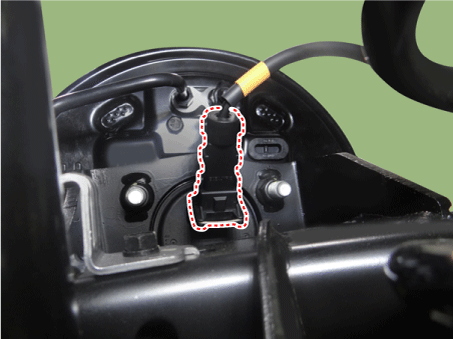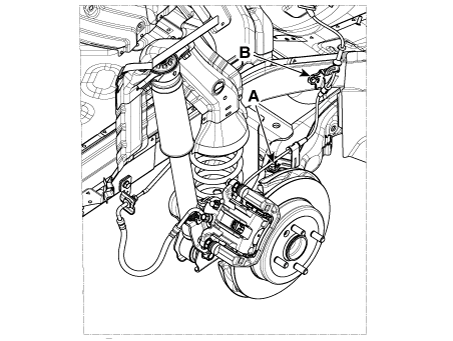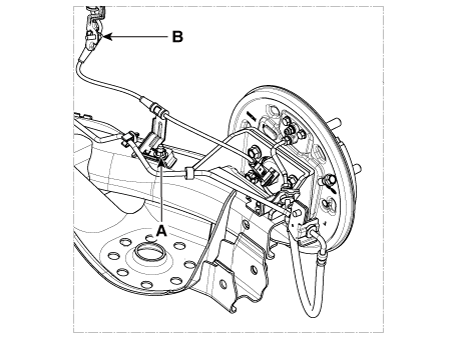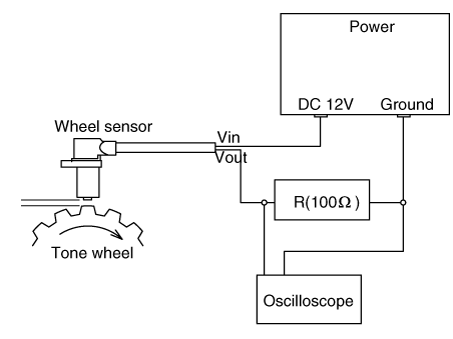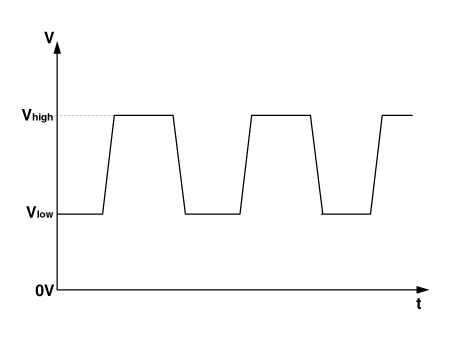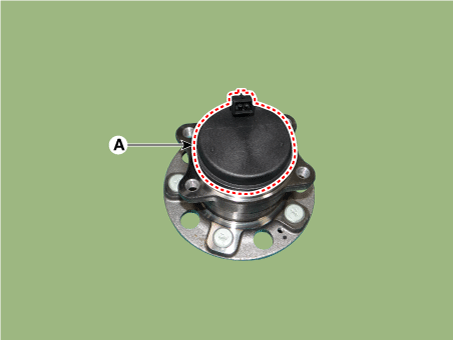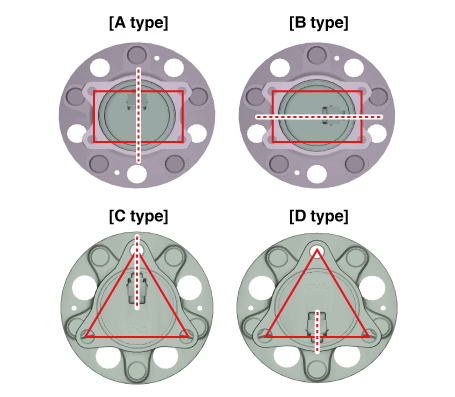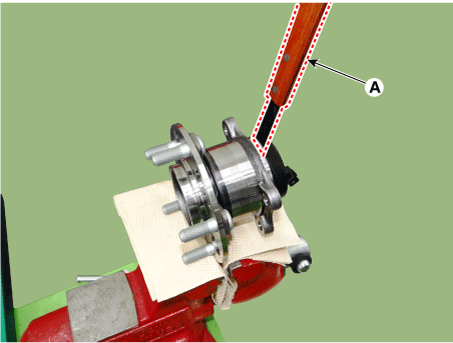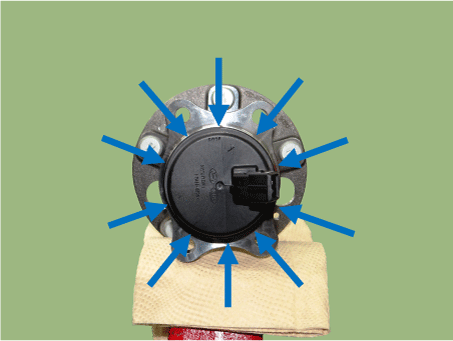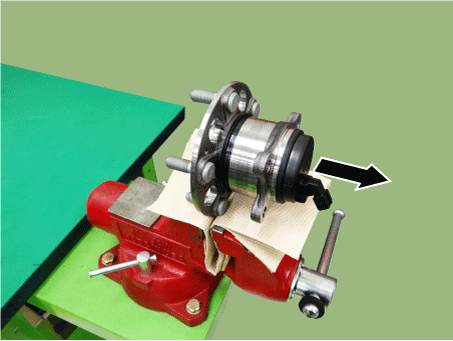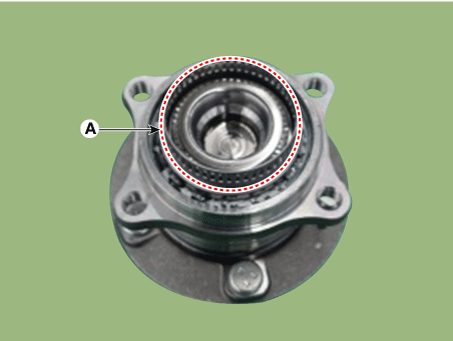Kia Rio: ESC (Electronic Stability Control) System / Rear Wheel Speed Sensor
Components and components location
| Components |
Drum type
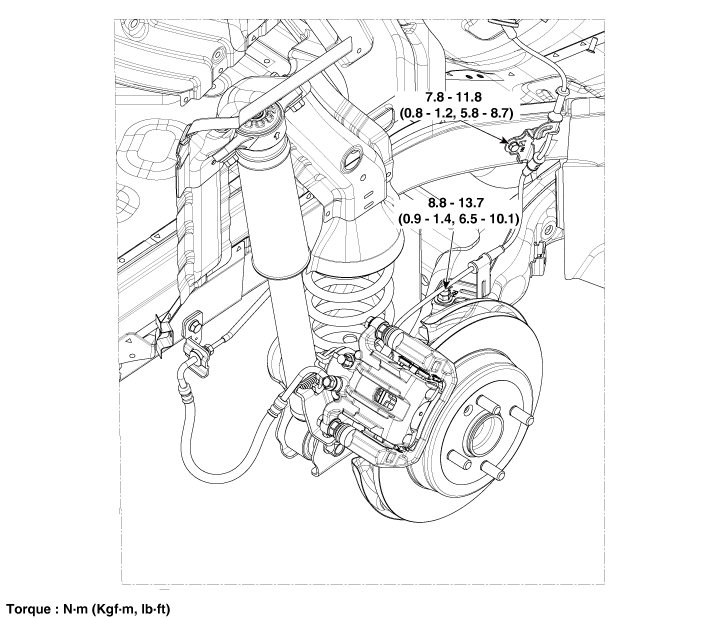
Disc type

Repair procedures
| Removal |
| 1. |
Remove the rear wheel & tire.
|
| 2. |
Disconnect the rear wheel speed sensor.
|
| 3. |
Loosen the nut (A) and bolt (B).
Drum type
Disc type
|
| 4. |
Remove the rear seat. (Refer to body -"Rear Seat Assembly") |
| 5. |
Remove the door scuff trim. (Refer to body -"Door Scuff Trim") |
| 6. |
Disconnect the rear wheel speed sensor connector. |
| Inspection |
| 1. |
Measure the output voltage between the terminal of the wheel speed sensor and the body ground.
|
| 2. |
Compare the change of the output voltage of the wheel speed sensor to the normal change of the output voltage as shown below.
|
| Replacement |
Rear Wheel Speed Sensor Cap
| 1. |
Remove the rear wheel hub bearing assembly. (Refer to Driveshaft and axle - "Rear Axle Assembly") |
| 2. |
Fix the rear hub bearing assembly (A) on the vise.
|
| 3. |
Check the direction of the sensor cap (A).
|
| 4. |
Remove the sensor cap by hammering on a gap between sensor cap and hub bearing assembly using a scraper (A).
|
| 5. |
Check if distorted or damaged the tone wheel or encoder (A).
|
| 6. |
Position the sensor cap to the same direction of sensor cap connector (A) as you checked before removing.
|
| 7. |
Install the sensor cap (A) with the special service tool (09527-1S010).
|
| 8. |
Install the rear wheel hub bearing assembly. (Refer to Driveshaft and axle - "Rear Axle Assembly") |
 Front Wheel Speed Sensor
Front Wheel Speed Sensor
Components and components location
Components
1. Front wheel speed sensor connector
2. Front wheel speed sensor
Repair procedures
Removal
...
 ESC OFF Switch
ESC OFF Switch
Description and operation
Description
1.
The ESC OFF switch is for the user to turn off the ESC system.
2.
The ESC OFF lamp is on when ESC OFF s ...
Other information:
Kia Rio 2017-2025 YB Owners Manual: Sunshade, Resetting the sunroof
Sunshade When opening the sunroof, the sunshade will also open. Once the sunroof is closed, the sunshade can be manually closed. Resetting the sunroof Whenever the vehicle battery is disconnected or discharged, or related fuse is blown, you must reset your sunroof system as follows: 1.The ...
Kia Rio 2017-2025 YB Service Manual: Transaxle Control Module (TCM)
Description and operation Description The module receives and processes signals from various sensors and implements a wide range of transaxle controls to ensure optimal driving conditions for the driver. Functions • Monitors the vehicle's operating condition ...


